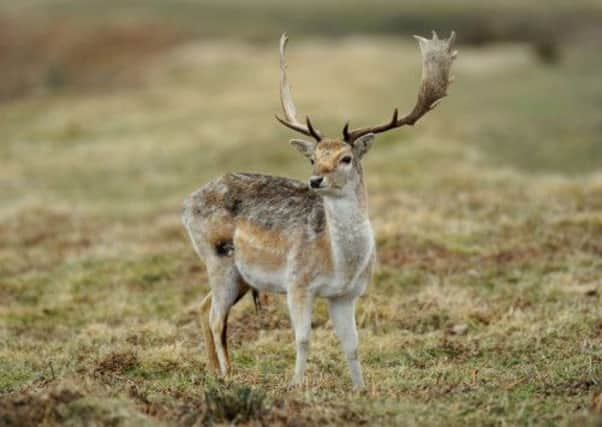The deer departed... call to arms to curb a wildlife menace


As a solution to an albeit growing problem, Dr Paul Dolman’s answer to Britain’s burgeoning deer problem sounds a little drastic. He would like them shot.
Not all of them and not by any random individual, but he would like between 50 and 60 per cent of them taken out by trained and licensed hunters.
Advertisement
Hide AdAdvertisement
Hide AdThat would mean close to one million animals being shot each year in the UK, but it is says Dr Dolman, from the University of East Anglia, the only way to keep population in check.
While previous studies have suggested culls of between 20 and 30 per cent would be sufficient to keep numbers at their current level, new research suggest a more radical approach is needed.
Conservative estimates put the deer population at about 1.5m and there is little doubt it is having a devastating effect on woodland, damaging farmers’ crops, causing road accidents and threatening a danger to public safety in urban areas. According to Dr Dolman, some have even taken up residence in a Sheffield graveyard.
“I don’t think it’s realistic to have wolves and brown bears in rural England,” he said, ruling out at least one hardline tactic. “In the absence of natural predators, the only way to manage them is to shoot them.”
Advertisement
Hide AdAdvertisement
Hide AdThe problem of deer is a modern one. Although they have been kept on private land belonging to the nobility for centuries, wild deer were virtually unknown in England for 1,000 years until their re-introduction by the Victorians.
Today, there are more deer in the UK than at any time since the ice age and they are making their presence felt. Each year more than 14,000 vehicles are severely damaged and about 450 people injured or killed on British roads as a result of collisions with deer.
The list of crimes doesn’t stop there. The animals, immortalised by Walt Disney in Bambi, strip woodland of wild flowers, brambles and shrubs, and disturb the ecology to the point that native birds are lost. The fact that nightingales are now so rare is largely blamed on deer.
Britain has a total of six deer species, four of which were introduced since Norman times. The most recent newcomer, established in the 1920s is the Chinese water deer and the expansion of woodland areas, together with the lack of natural predators, have provided perfect conditions in which they can flourish.
Advertisement
Hide AdAdvertisement
Hide Ad“Studies have been done in Sheffield that show roe deer living in cemeteries,” said Dr Dolman.
“Muntjac deer will move into private gardens and allotments. Fallow deer are wide ranging – they live in woodland but come in to feed.
“There are housing estates in London where they’ve been known to graze on lawns in the evening. There have been no accidents yet but it’s only a matter of time. These are large animals with sharp antlers. If you had one cornered in a school playing field, it could be nasty.”
Dr Dolman led the first full-scale census of roe and muntjac deer populations across 145 sq miles of woods and heathland in Breckland, East Anglia. The researchers drove more than 1,140 miles at night using thermal imaging cameras to spot deer and provide an accurate estimate of their true numbers.
Advertisement
Hide AdAdvertisement
Hide AdThe results, published in the Journal of Wildlife Management, indicate that existing management strategies are failing. Although deer numbers appeared stable, this was only because thousands of the animals were being pushed out into the surrounding countryside each year.
“Deer populations are going through the roof,” he said. “We’re calling for a very large increase in the magnitude of deer culling.”
Darting deer with contraceptives to stop them reproducing was not a practical solution, he argued, as it does not resolve the immediate problem and could mean venison might be tainted with potentially harmful drugs.
The baton has now been handed to landowners such as the National Trust to organise the culling with support from the Department for Environment, Food and Rural Affairs (Defra).
Advertisement
Hide AdAdvertisement
Hide AdCulling would have to be carefully regulated and only carried out by trained stalkers and there could be an unexpected upside – a welcome supply of fresh, healthy meat.
“We’re talking about putting venison steaks on your family table or eating venison at gastropubs,” he added. “If we shifted part of our diet to deer it wouldn’t be a bad thing.”
Allowing deer numbers to expand unchecked until their populations crashed would have “consequences a lot crueller than culling”, he maintained.